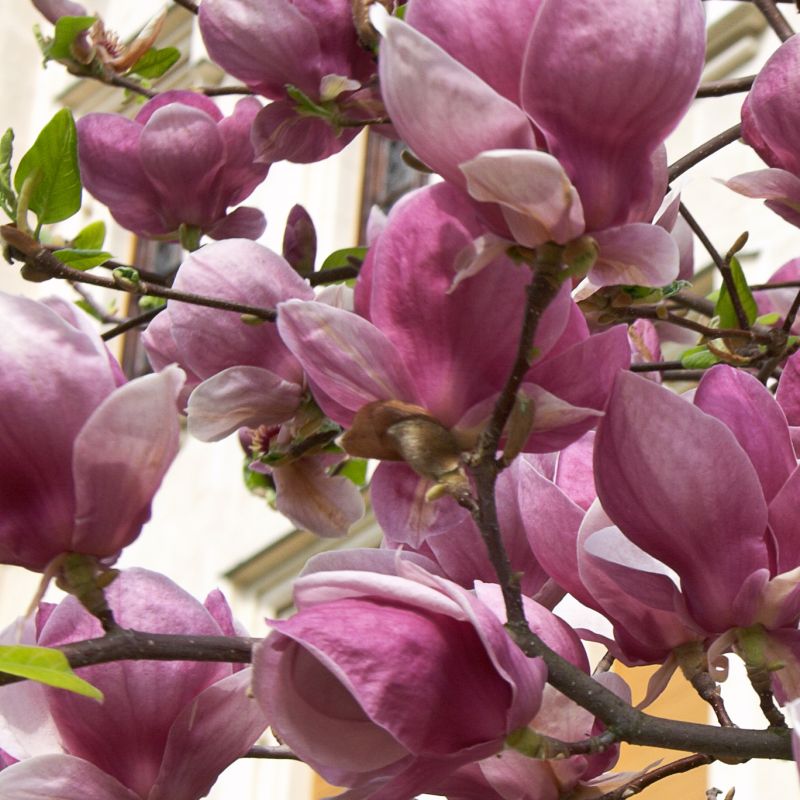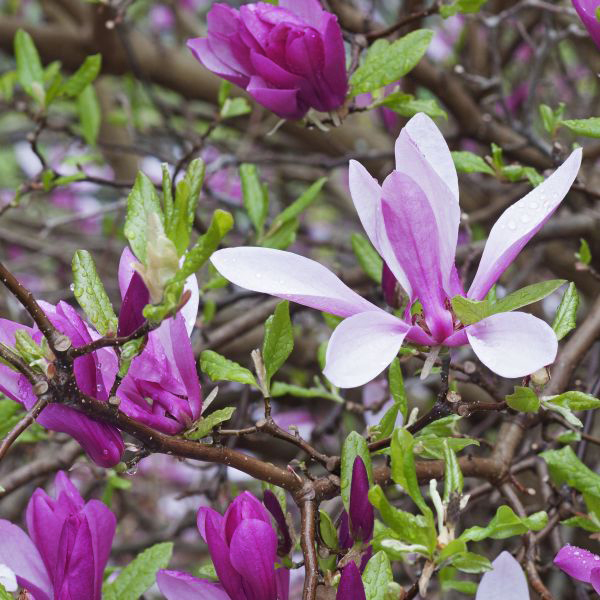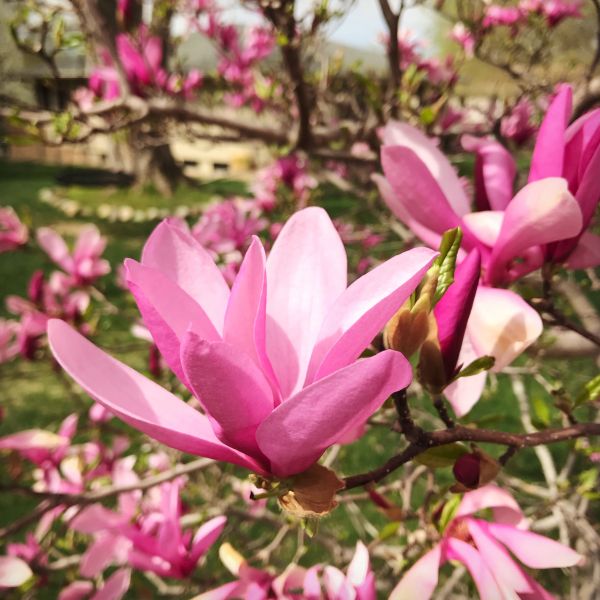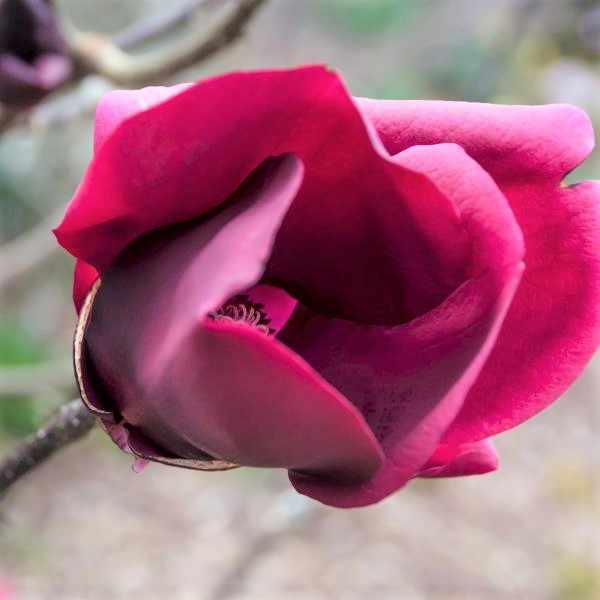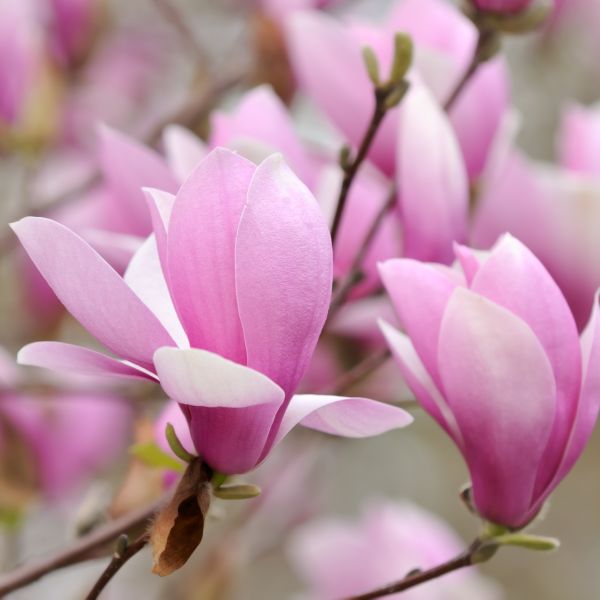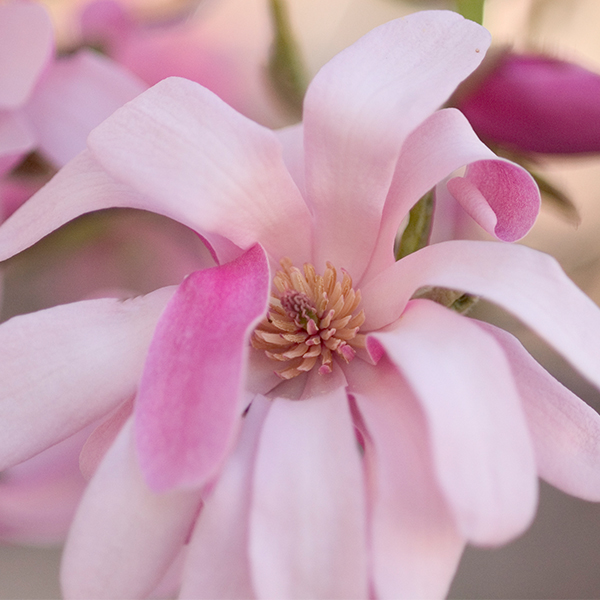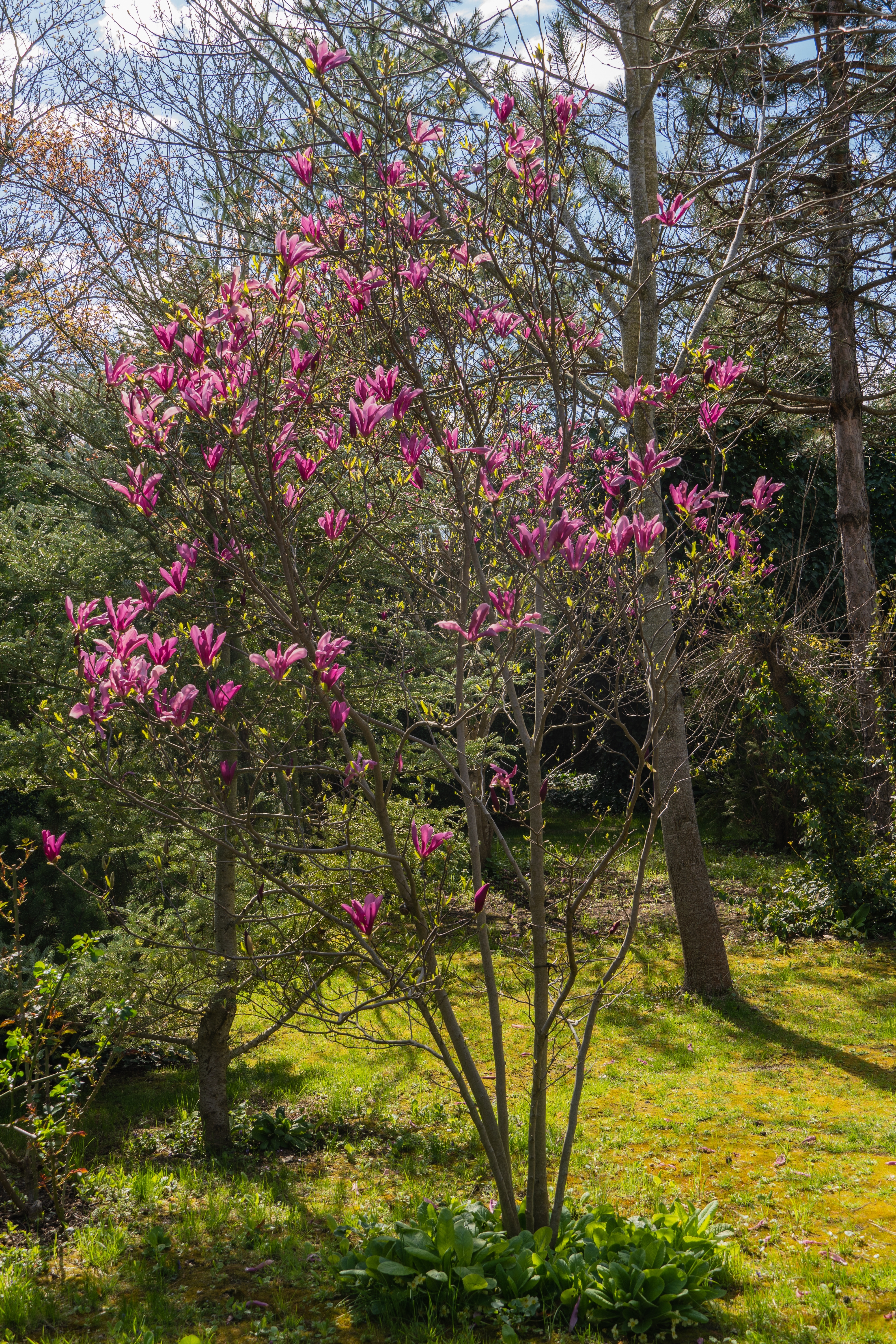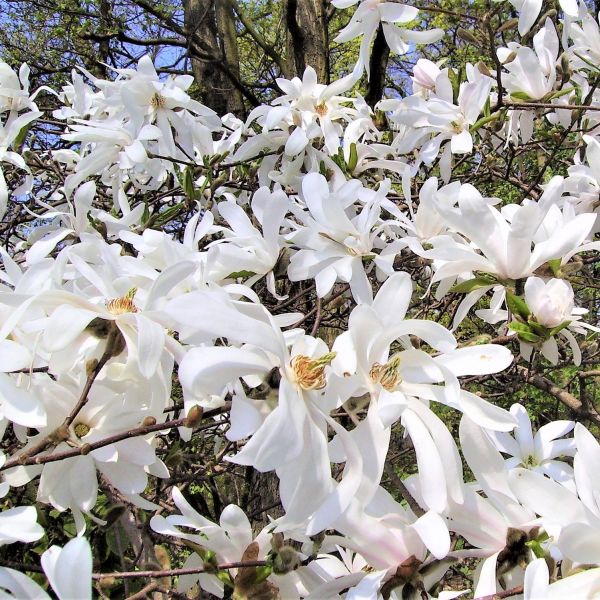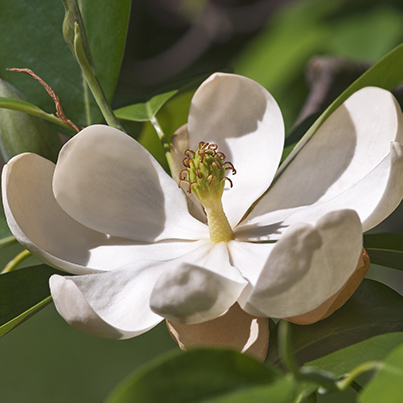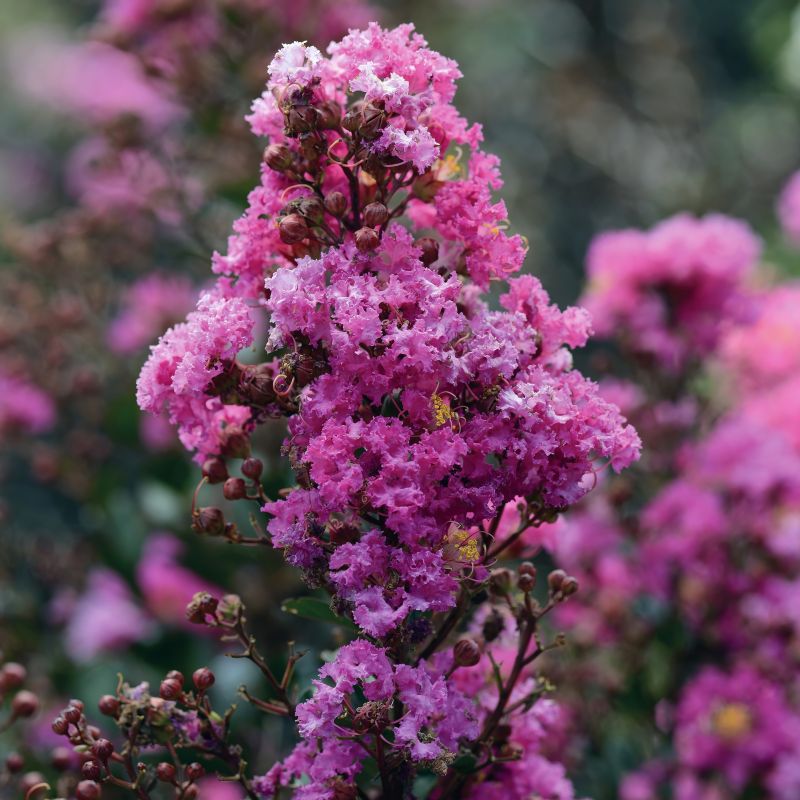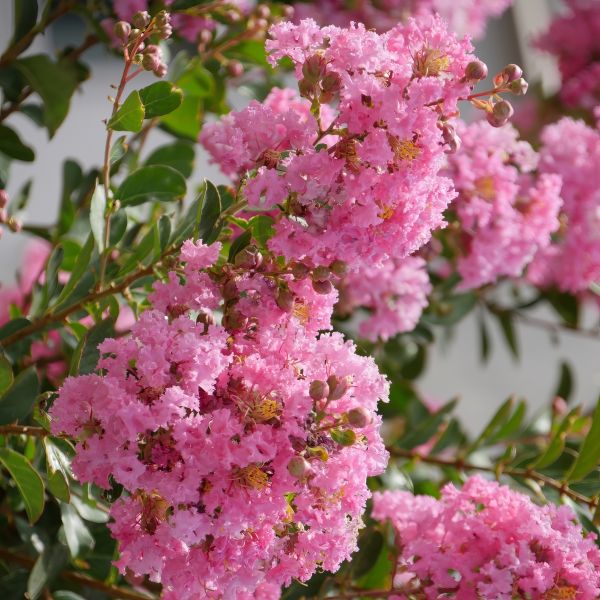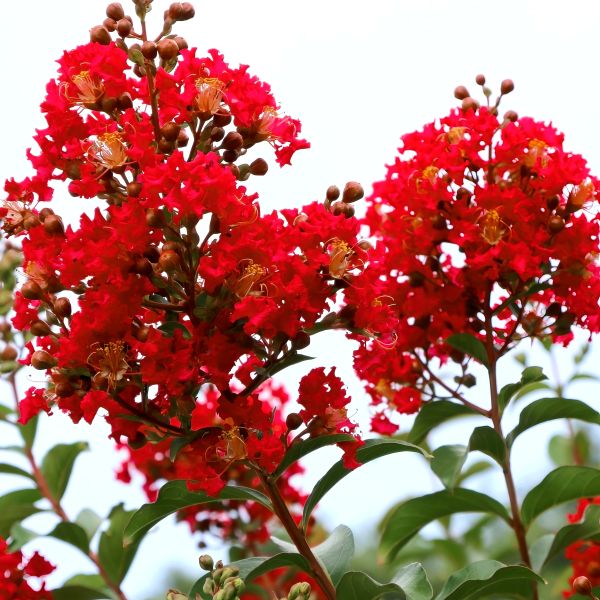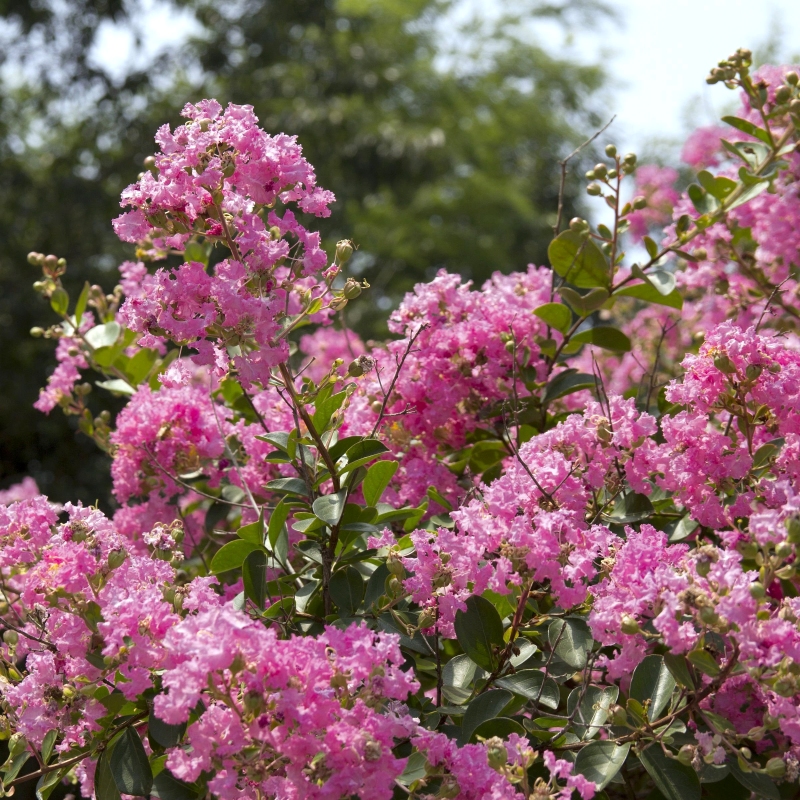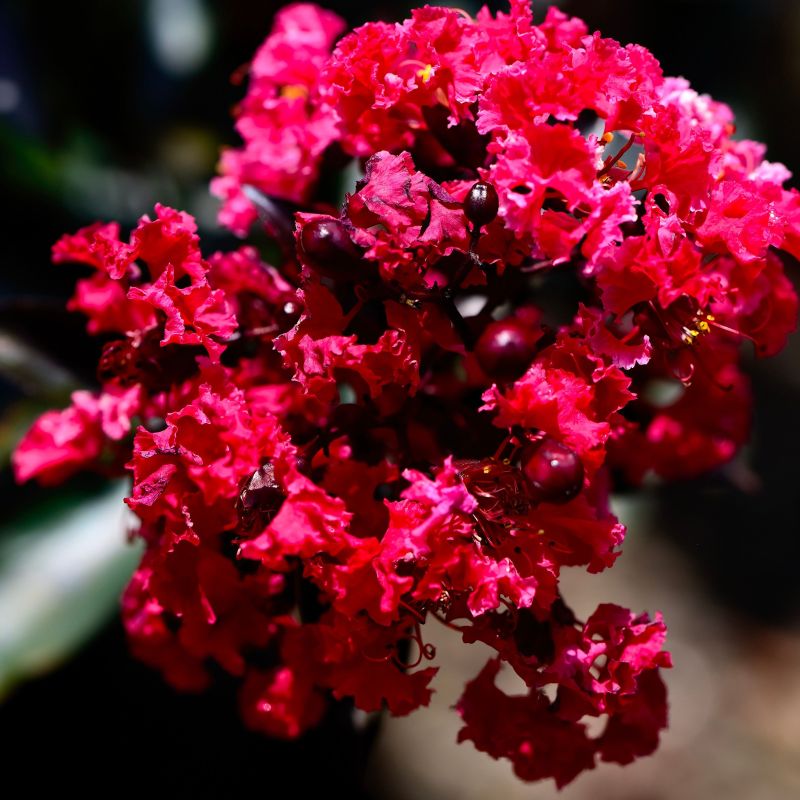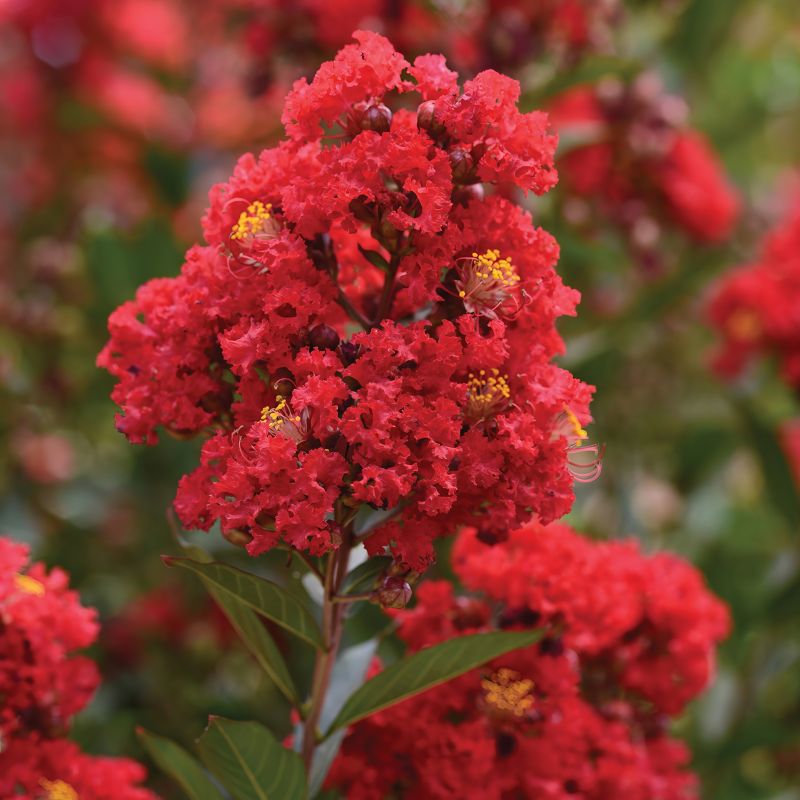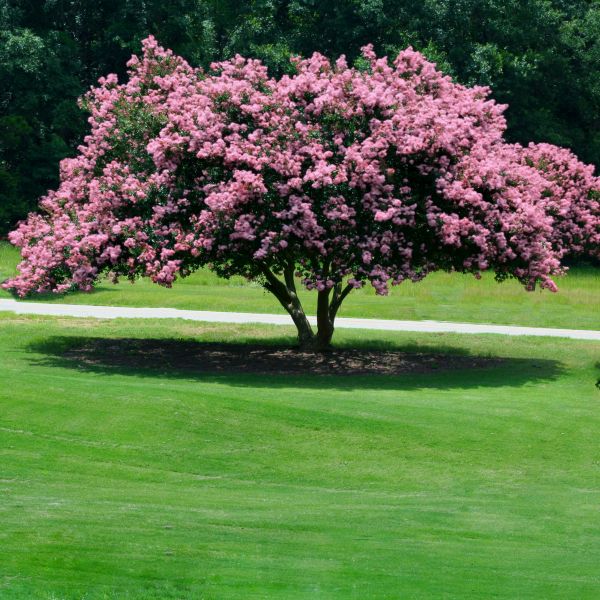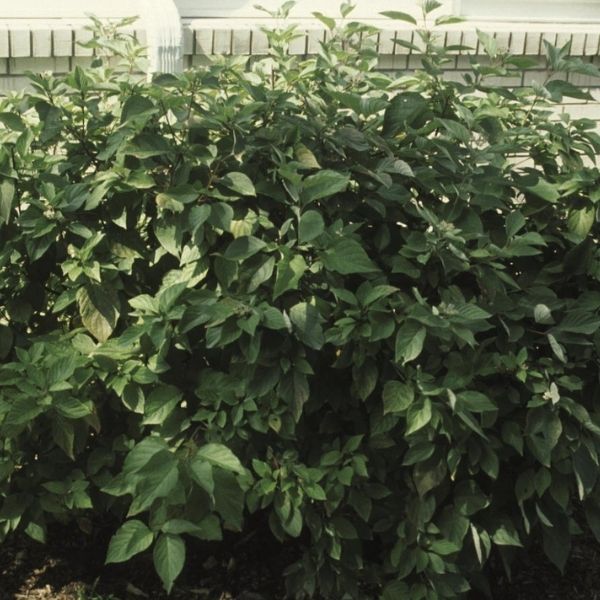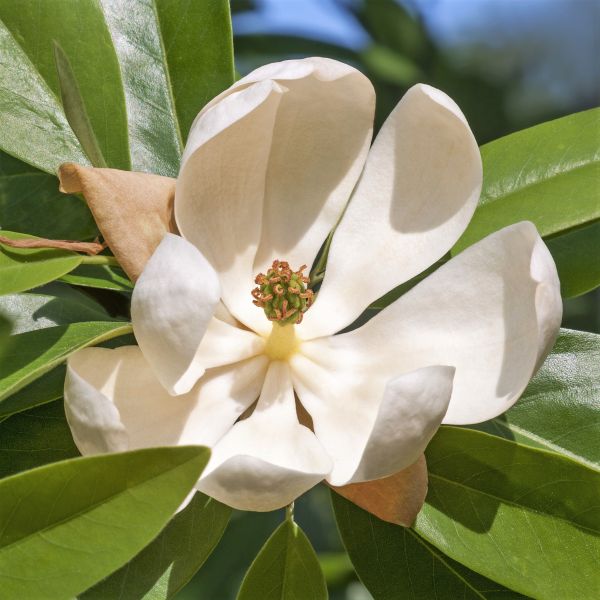





Sweet Bay Magnolia
Magnolia virginiana
18 reviews
Sweet Bay Magnolia
Magnolia virginiana
18 reviews
- 1 Gallon Multi-Stem
- 3.5 Gallon 4-5 Feet Multi Stem
We are sorry, product is currently out of stock due to seasonal availability. Please check the "Related plants available in your area" section below
Not just beautiful - intentionally selected by ShrubHub's 3D landscape design team to fit real-world spaces and maximize yard potential.
Why Sweet Bay Magnolia?
Sweet Bay Magnolia (Magnolia virginiana), also known as swamp magnolia, is a small to medium-sized evergreen tree. It has dark green leaves with a smooth texture and a sweet aroma. The fragrant, creamy white flowers bloom in the summer and attract pollinators such as bees and butterflies. Sweet Bay Magnolia is adaptable to a variety of soil types and is commonly found in wetland areas.
Related plants available in your area
Sunlight
Sweet Bay Magnolia requires full sun to partial shade. It prefers a location with at least 4 to 6 hours of direct sunlight per day, but can tolerate some shade as well.
Watering
Sweet Bay Magnolia prefers moist soil, so regular watering is necessary, especially during hot and dry periods. It should be watered deeply and consistently, allowing the top few inches of soil to dry out between waterings.
Fertilizing
Sweet Bay Magnolia prefers a well-drained soil that is slightly acidic to neutral in pH. It benefits from a balanced fertilizer high in nitrogen, phosphorus, and potassium. Applying a slow-release fertilizer in early spring can promote healthy growth and b
Sweet Bay Magnolia (Magnolia virginiana)
The Sweet Bay Magnolia (Magnolia virginiana) is a small to medium-sized tree belonging to the Magnoliaceae family. Also known as the Swampbay, this deciduous tree is native to the southeastern United States, where it thrives in wetland areas and along the coastlines.
The Sweet Bay Magnolia features an attractive pyramidal or rounded shape, reaching heights of 20 to 40 feet and spreads of 10 to 20 feet. It is known for its elegant, creamy white flowers that bloom in late spring to early summer, emitting a delightful lemon fragrance. The flowers are cup-shaped and can be up to 4 inches in diameter, adding a touch of beauty to any landscape.
The leaves of this magnolia species are smooth and oblong, measuring 3-6 inches long and 2 inches wide. They are a lustrous dark green color on the upper surface and have a silvery-white or pale green underside, which creates an appealing contrast. In fall, the foliage often turns a striking yellow or brown. The bark of the Sweet Bay Magnolia is grayish-brown and develops shallow furrows as the tree matures.
One of the key attributes of the Sweet Bay Magnolia is its adaptability to various soil types, including both well-drained and poorly-drained soils. It can tolerate wet conditions, making it an excellent choice for planting near ponds, streams, or other water features. While it prefers full sun to partial shade, it can also grow in shady locations, although flowering may be reduced in such environments.
Aside from its aesthetic appeal, the Sweet Bay Magnolia also provides habitat and food for a variety of wildlife. Birds are particularly attracted to the reddish, cone-like aggregate fruits that develop in the late summer and persist into winter, providing a valuable food source. The seeds are also occasionally consumed by squirrels.
In landscaping, the Sweet Bay Magnolia is a charming addition as a specimen tree, privacy screen, or as part of a mixed shrub border. Its lovely flowers, pleasant fragrance, and unique foliage make it a popular choice among garden enthusiasts. Whether planted near water features or in regular garden settings, this magnolia species adds a touch of elegance and tranquility to any outdoor space.
Plant Information:
| Botanical Name: | Magnolia virginiana |
| USDA Zones: | 5 - 9 |
| Water: | Medium |
| Exposure: | Full Sun |
| Soil Needs: | Widely Adaptable |
| Mature Height: | 15 - 35 feet |
| Mature Spread: | 10 - 35 feet |


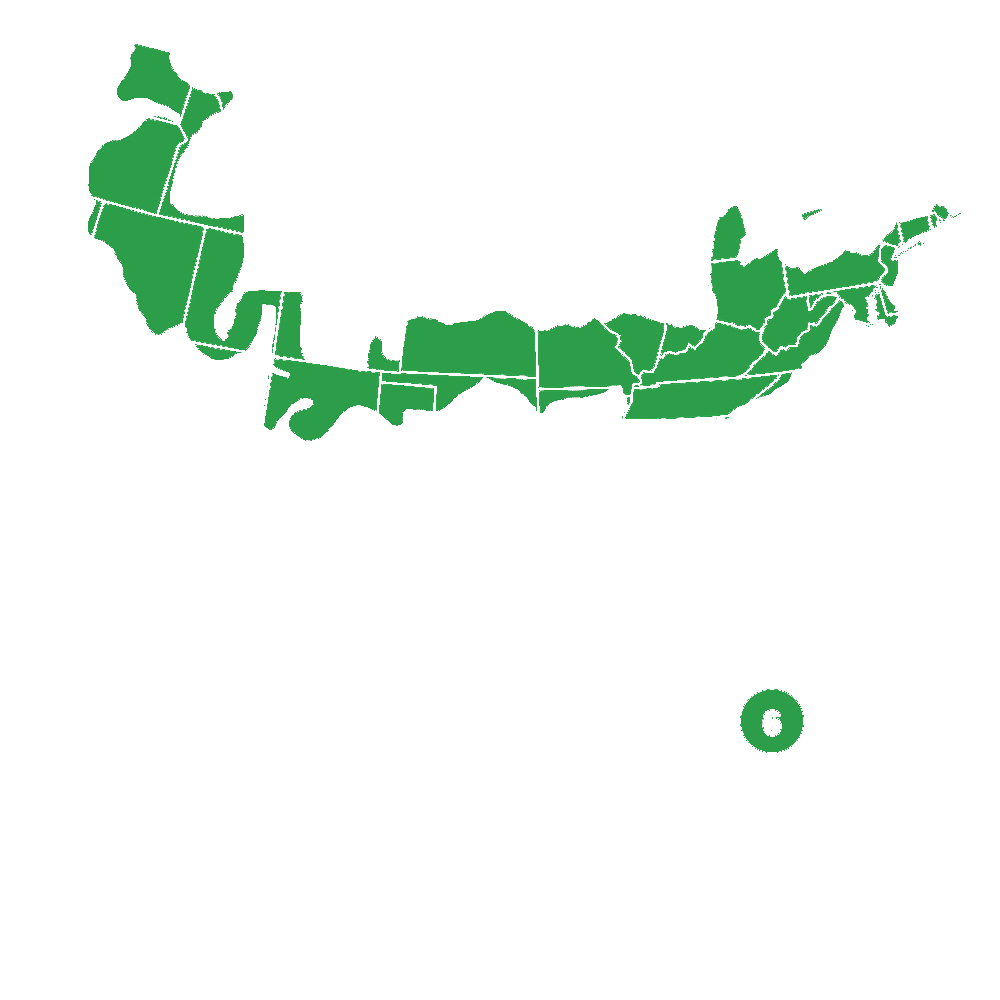

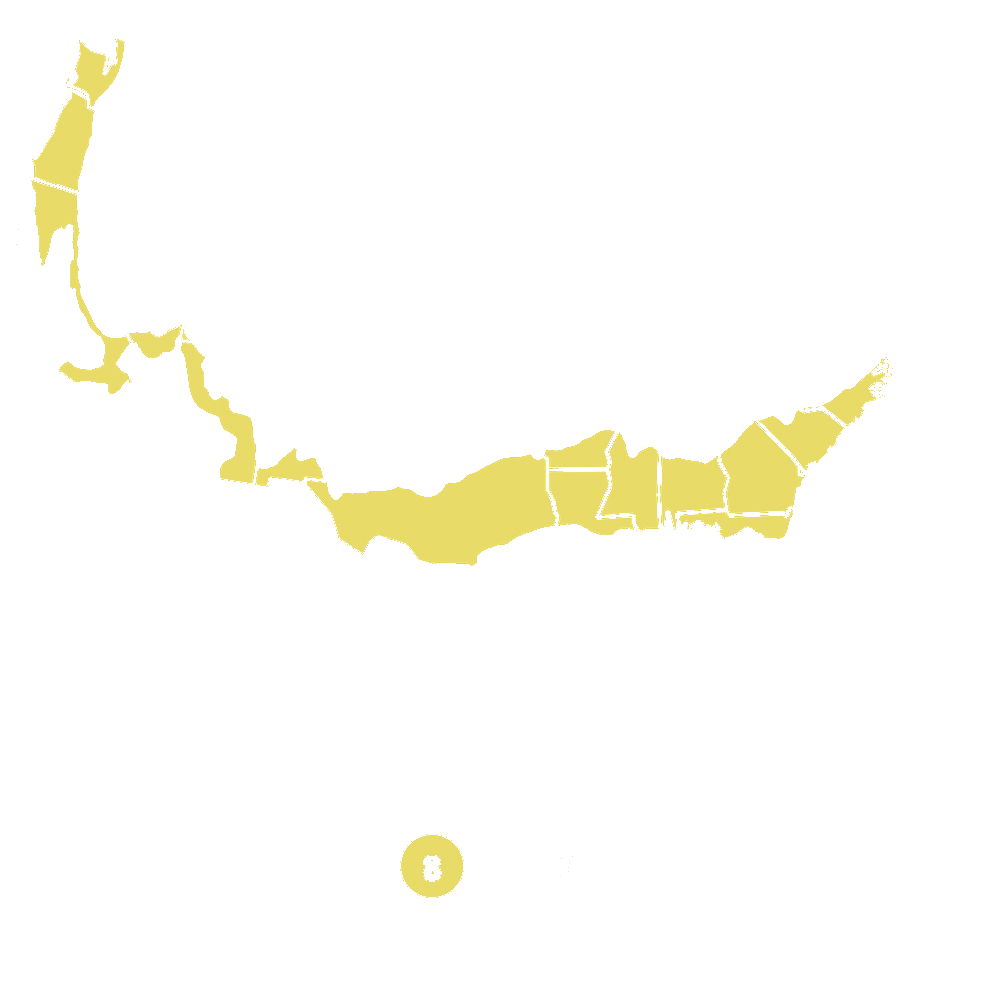

Pollination Info
Pollination Information for Sweet Bay Magnolia (Magnolia virginiana)
The Sweet Bay Magnolia (Magnolia virginiana) is a beautiful flowering tree native to the southeastern United States. It is also known as the Laurel Magnolia, Swamp Magnolia, or White Bay.
Pollination Process
The Sweet Bay Magnolia is pollinated primarily by beetles. This unique method of pollination is different from most flowering plants, which rely on bees or other insects. Beetles are attracted to the tree's large, fragrant flowers and feed on the pollen and nectar it provides.
Flower Characteristics
The flowers of the Sweet Bay Magnolia are large and showy, with creamy white petals and a pleasant fragrance. They have a bowl-like shape, which makes it easy for beetles to crawl inside and access the pollen and nectar. The flowers usually bloom in late spring to early summer.
Beetle Pollinators
Many types of beetles are known to pollinate the Sweet Bay Magnolia. These include various species of scarab beetles and weevils. While beetles may not be as efficient as bees in transferring pollen, they still play a crucial role in the reproductive cycle of this tree.
Pollination Importance
Pollination is essential for the Sweet Bay Magnolia as it is the process through which the tree reproduces. The transfer of pollen from the stamen (male reproductive organ) to the pistil (female reproductive organ) leads to the formation of seeds. Without pollination, the tree would not be able to produce new generations.
Attracting Pollinators
If you want to attract pollinators, including beetles, to your Sweet Bay Magnolia tree, there are a few steps you can take:
- Plant the tree in a location with plenty of sunlight and well-drained soil.
- Provide a source of water nearby to keep pollinators hydrated.
- Avoid using pesticides or insecticides that can harm or deter pollinators.
- Encourage biodiversity in your garden to attract a variety of beetles and other beneficial insects.
Conclusion
The Sweet Bay Magnolia relies on beetle pollinators to reproduce and set seeds. Understanding the pollination process and taking steps to attract these beetles can help ensure the health and successful reproduction of your Sweet Bay Magnolia tree.
FAQ
Sweet Bay Magnolia (Magnolia virginiana) FAQ
General Information
What is a Sweet Bay Magnolia?
The Sweet Bay Magnolia (Magnolia virginiana) is a small to medium-sized evergreen or semi-deciduous tree native to the southeastern United States. It belongs to the Magnoliaceae family.
Appearance
How tall does a Sweet Bay Magnolia grow?
Sweet Bay Magnolias typically grow to a height of 15-25 feet, but they can reach up to 60 feet under optimal conditions.
What do the leaves of a Sweet Bay Magnolia look like?
The leaves are relatively large, oblong or elliptic in shape, and glossy green on the upper surface. The undersides of the leaves have a light, silvery-green appearance.
Do Sweet Bay Magnolias produce flowers?
Yes, Sweet Bay Magnolias produce fragrant, creamy white flowers that bloom in late spring or early summer. The flowers have a pleasant lemon-like fragrance.
Do they produce any fruits?
Yes, after the flowers fade, Sweet Bay Magnolias produce cone-like fruits that contain bright red seeds.
Cultivation
Where can I plant a Sweet Bay Magnolia?
Sweet Bay Magnolias prefer moist, well-drained soils and partial shade. They can be planted in gardens, near water bodies, or as specimen trees.
Can I grow a Sweet Bay Magnolia in a pot?
It is possible to grow a Sweet Bay Magnolia in a large pot or container, as long as the container is large enough to accommodate the tree's root system. Ensure the soil remains consistently moist.
How much water do Sweet Bay Magnolias require?
These trees prefer moist soil, so regular watering is recommended, especially during dry periods. However, make sure the soil is well-drained and not excessively waterlogged.
When should I fertilize my Sweet Bay Magnolia?
Fertilize the tree in early spring before new growth begins, using a balanced, slow-release fertilizer specifically formulated for trees and shrubs.
How do I prune a Sweet Bay Magnolia?
Pruning is generally not required for Sweet Bay Magnolias, but if necessary, it's best to trim them in late winter or early spring before new growth emerges. Remove any dead, damaged, or crossing branches. Always use clean and sharp pruning tools.
Common Issues
What pests should I watch out for?
Sweet Bay Magnolias are relatively pest-resistant. However, they can occasionally suffer from aphid or scale insect infestations. Regular inspection and appropriate treatment, such as horticultural oil or insecticidal soap, can help control these pests.
Are there any diseases that affect Sweet Bay Magnolias?
These trees can be susceptible to foliar diseases such as powdery mildew, leaf spot, and rust. Good air circulation and avoiding overhead watering can help prevent these diseases. Fungicidal treatments may be necessary if an infection occurs.
Propagation
How can I propagate a Sweet Bay Magnolia?
Sweet Bay Magnolias can be propagated from seeds or through softwood cuttings taken in summer. Seeds require cold stratification to break dormancy and should be sown in a well-draining soil mixture. Softwood cuttings should be taken from young, healthy stems and rooted in a suitable rooting medium.
How long does it take for a Sweet Bay Magnolia to bloom when grown from seed?
When grown from seed, it can take around 3-5 years for a Sweet Bay Magnolia to reach maturity and begin flowering.
Planting & Care
Planting & Care for Sweet Bay Magnolia (Magnolia virginiana)
Planting
- Choose a planting location with full sun to partial shade. Sweet Bay Magnolia can tolerate a wide range of soil conditions but prefers well-drained, moist soil.
- Dig a hole that is two to three times the width and the same depth as the root ball.
- Remove the plant from its container and gently loosen the roots.
- Place the plant in the hole, ensuring that the top of the root ball is level with or slightly above the soil surface.
- Backfill the hole with soil, gently tamping it down to remove any air pockets.
- Water the newly planted Sweet Bay Magnolia thoroughly to help settle the soil.
Watering
- Keep the soil consistently moist, especially during the first year after planting. Avoid overwatering, as excessive moisture can lead to root rot.
- During periods of drought, provide supplemental watering to ensure the plant's hydration.
Fertilizing
- Apply a slow-release, balanced fertilizer in early spring to promote healthy growth. Follow the package instructions for proper application rates.
- Avoid over-fertilization, as it can cause rapid, weak growth.
Pruning
- Prune Sweet Bay Magnolia in late winter or early spring before new growth emerges.
- Remove any dead, damaged, or crossing branches to promote a strong and open framework.
- Take care not to remove more than 25-30% of the total canopy to avoid stressing the plant.
Pest and Disease Control
- Monitor the plant regularly for any signs of pests such as scale insects, aphids, or leaf miners.
- Treat infestations with appropriate insecticides according to the manufacturer's instructions.
- Inspect the plant for any signs of diseases like powdery mildew or leaf spot.
- If necessary, apply fungicides or seek professional advice to address the specific disease.
Winter Care
- Provide mulch around the base of the plant to protect the roots during winter.
- Avoid placing mulch directly against the trunk to prevent moisture buildup and potential rotting.
By following these planting and care instructions, you can ensure a healthy and thriving Sweet Bay Magnolia in your garden.
Check Out These Verified Customer Reviews:
Customer Reviews
4.7 out of 5 based on 18 reviews
Thank you! Your review has been submitted.
Responsive customer service
Fantastic customer service, they answered all my questions promptly. The magnolia plant was a great addition to my yard.
Fast shipping, well packaged
Item has been added to your cart.



